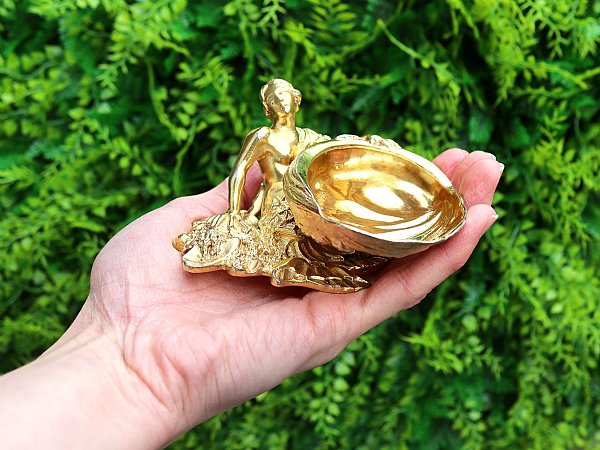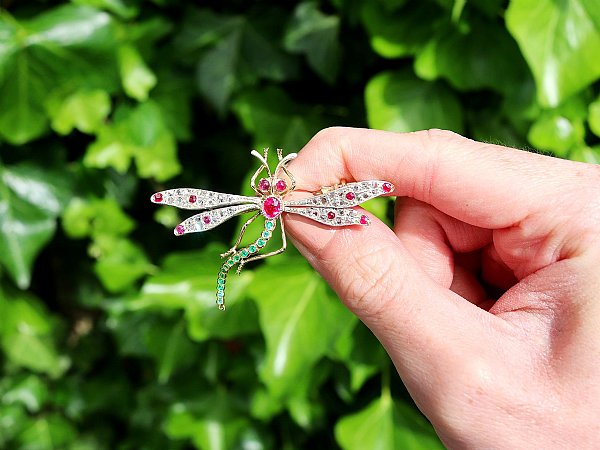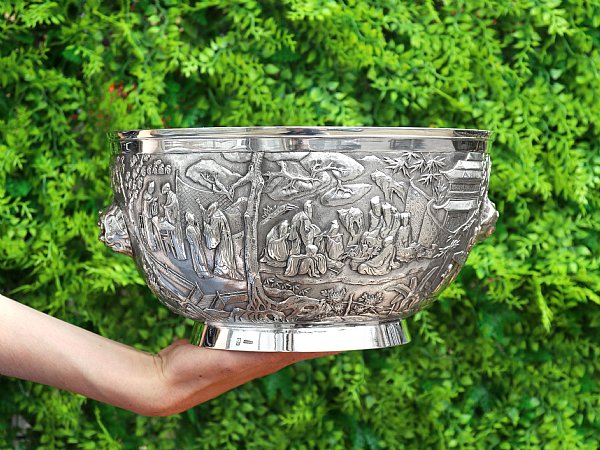Search Results for: '{{searchText}}'
Sorry...
We don't seem to have what you're looking for.
However we do have thousands of magnificent pieces of silver and jewellery available for you to view online. Browse our store using one of these categories.
Please wait for loading data... 
AC Silver is pleased to offer a select range of silver salts for sale including impressive, rare and highly collectable examples.
The range includes fine examples of cauldron and trencher salts including pieces by collectable silversmiths and crafted in English sterling silver.
Our range of trencher salts are hand-picked by Andrew Campbell and only the finest examples of their type are selected to join the AC Silver inventory.

Strong flavours have always been a part of cooking and eating, ordinally intended to mask the taste of gamey, often half rotten food. Salt played a key part in this process; frequently viewed as a symbol of purity and friendship, salt served uses beyond livening up plain vegetables. For these reasons, salt-keepers have always been well-designed and clearly valued pieces. The importance and value of salt is also reflected in the age-old saying of someone being ‘worth their salt’. Furthermore, the phrase "Below the salt†was used widely regarding social standing: those who sat between the salt cellar and the head of the table were the important guests of a higher class. Those who sat further down than it (or "below the saltâ€) were decidedly inferior. This illustrates nicely just how important salt cellars were considered by 15th century diners.
The salt cellar as we know it today, has gone through many transformations over the centuries. They were first documented in Ancient Rome, and went on to gain huge popularity in Elizabethan England. From tiny too tall, plain to lavishly embellished, salt cellars have long been essential pieces of silverware at the dinner table. As well as being a vital container for an expensive and much-loved condiment, the salt cellar was also used to mark the social hatchery of the Elizabethan dinner table.
Salt cellars are a good, relatively inexpensive way for collectors to see the range of styles seen in silverware throughout the ages, contained within a smaller, less expensive piece than many other silver collectables. Salt cellars could be made out of various materials, varying from earthenware to ivory and silver. They also varied widely in their embellishment and size. Although they were most commonly found around the 10†mark, cellars could sometimes be as small as 1†and modestly plain. Of course, this all depended on the taste of the host and the social rank of the banqueters. The most common form for salt cellars is the cauldron shape, raised up on three feet. A rarer example may be oval in form, raised up on four feet rather than three.
The earliest types that we can trace back to the 15th century are standing silver salts. These would originally have been crafted in an hourglass form. After the first half of the century, they tended to take cylindrical forms. These early specimens were usually lavished with ornamentation; featuring repouss© work with chased figures. As the century aged, bell-shaped salt cellars came into vogue. They were, in turn, replaced when we enter the 17th century by tall steeple salts. Both bell salts and steeple salts were multipurpose. They would often incorporate tiny compartments in their tiers which would be used to contain other spices. Shorter, octagonal and circular forms then swept in to take the limelight. They became the popular form of standing salt in the late 1800s.
Casters for sugar, spices, and pepper originated in the midst of the 17th century in France. The most common design of such casters is a tall cylinder referred to as a ‘lighthouse’. Frequently, three were sold in a set, for salt, pepper, and sugar. Finding these sets today proves a challenge. The range of salt cellars available in sets is encouraging, however, and many exist across a range of styles and prices.
Within the 18th century, we continue to see a great variety of shapes at play. Circular, oval, octagonal, tripod and tall with three feet were all popular designs of salt cellars. During the late 1700s, in fitting with the Neoclassical style=, salt cellars adopted a tureen-like shape; with the classical influence upon design following salt cellars into the early 1800s. At this time, we can see a reversion to some older styles. The tureen shape remained popular and circular bowls with three or four ornamented feet were in fashion.
Through the 19th century, the cauldron-shaped salts continued to be produced as well as new designs, increasingly elaborate as time went on, adopting the Regency styles. Each type of silver cellar is still valued today, their prices generally reflecting their quality and gauge of materials.
The popularity of these delightful pieces of silverware remained fixed up until the early 20th century. From 1911 free flowing salt began to be used more frequently and upon the subsequent invention of the salt shaker, the necessity of the salt cellar decreased. To this day however, salt cellars have remained highly sought after collectors’ items. With their diverse shapes and patterns, and their integral part in social history, we still firmly believe that salt cellars have an important place at the dinner table.




